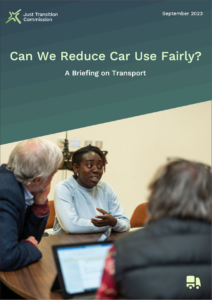To view the full content of the report, please download the PDF below.
Shetland, Community Benefit, and the Energy Transition

Background
To prepare this report, the Commission has instructed a small research team at the Lerwick-based energy consultancy Voar, Daniel Gear and Tom Wills, to undertake this work over recent months. The report has also been shaped by input and advice from the think-tank Future Economy Scotland, particularly Miriam Brett. We are very grateful for their work and the insights it has provided us with as we have considered our advice on how a just transition for Shetland can be achieved, and the broader insights to be drawn from this. Elements of the report touch on complex and contested technical matters and this research should not necessarily be taken, in whole or in part, to be the Commission’s consensus view on a particular subject.
Synopsis
Shetland has a singular experience with energy transitions, both past and present, but there are many valuable lessons for the entire country to draw on. This independent research report is intended to provide valuable data and evidence on four key areas in particular. These are:
- Shetland’s socio-economic status, including current socio-economic indicators, the labour market, emissions and inequalities.
- Community benefit approaches in the era of oil and gas
- Community benefit approaches from renewables, hydrogen, and other aspects of the energy transition
- Different models for delivering community benefit in comparable communities.
This research found that:
- Shetland has been a pioneer in community wealth building and has enormous renewables potential, but the scale of coming development is unlikely to be considered just, unless the community receives a fair share of the value of local resources.
- In the 1970s, Shetland used the Zetland County Council Act to secure community returns from oil and gas through various novel means, including disturbance payments, port operations and the use of a charitable trust to manage the funds.
- The Viking Energy Windfarm could be considered a missed opportunity: in the early 2000s, Shetland Islands Council partnered with industry to co-develop the project, but the community stake was ultimately lost as a result of project delays and an asymmetry in risk tolerance and financial clout between the community and the developer. Viking could be the UK’s most productive onshore windfarm but is set to return what could be considered a low level of community benefit payments relative to the quality of the wind resource.
- North Yell Development Council’s community-owned Garth windfarm provides a model that other communities should be able to follow but are currently unable to, because of the way that UK electricity grid connections are managed – and other hurdles that communities are less well equipped to navigate than commercial developers.
- Despite Shetland’s wealth, nearly half of working households live below the Minimum Income Standard, fuel poverty is the highest in Scotland, and council finances are declining: new jobs won’t fix these issues because unemployment is already low.
- Shetland’s fishing industry is deeply concerned by the scale and possible impact of offshore wind developments and given that the fleet remains overwhelmingly locally owned, the displacement of local boats from their traditional grounds could represent a transfer of economic value from locals to asset managers.
- Shetland shows that community ownership of small wind projects can have more impact than community benefit payments from larger commercial projects. Achieving greater community participation requires changing how the UK electricity grid is managed and strengthening the capacity of community groups and local authorities.
- Where community ownership is not feasible or desirable, there is a case for statutory community benefit payments coupled to production rather than installed capacity, and index-linked to a consistent historic baseline, rather than first power.
More Publications





